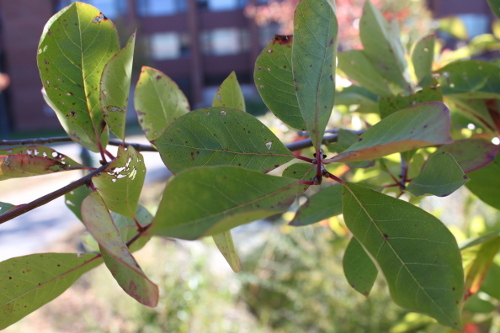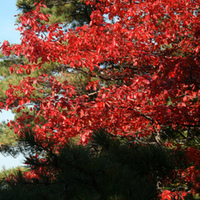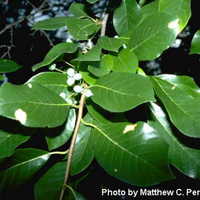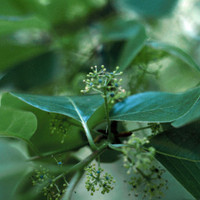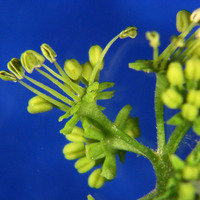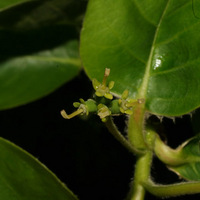Black Tupelo : Physical Description
The black gum is a polygamo-deciduous tree (has gendered flowers) and looks to be what you think a tree traditionally looks like from a distance. It has a straight and sturdy trunk with branches and foliage that starts wide and grows to a point the higher it grows. It’s a perfect amount of “puff” or “fluff.” The branches come out at right angles form the trunk and droop only slightly, if at all. This creates a cone-shape head.
These trees are usually medium sized trees that reach up to 50ft in a climate like Vermont and up to 100ft in a swampy moist area.
Its roots are huge, striking and deep.
Its wood is a pale yellow. It’s a very heavy, strong, and tough wood mainly because the veins don’t run parallel like traditional wood/trees. Instead they are highly twisted and interwoven, making incisions and splits into it difficult.
The bark is a dark grey, and its texture depends on age. It starts out on the smoother side of scaly. As the tree ages, it turns a dark brown and the texture becomes “alligator bark.” The branches are pale-green and orange and sometimes smooth.
The twigs are grey to red-brown and smooth.
The buds are red-brown, round and pointed, obtuse, about 1/4in long. The inner scale enlarge and become red before they fall.
The leaves of the gum are pretty unique. They alternate and crowd at the end of branches. They can grow to be 2in-5in long and 1/2in-3in wide in an oblong oval shape. They’re like wedges with a rounded base. When fully grown they are thick, deep green, and very shiny with a feather veined midrib. Its underside is a pale green and a little fuzzy.
The fruit is a berry that ripens in autumn and is and oblong drupe about 1/3in-1/2in long. It’s dark blue and grows in clusters of two or three. They’re sour (think sourgum) but still sought by birds and animals. The seed or pit is ribbed (Burns 1990). Think blueberries with seeds!
The flowers bloom in late May/early June when the leaves have grown in halfway. They are a yellow-green-white color with slender, soft penducles or stems that support a cluster of flowers. Then it turns into group of pistillate which in a traditional flower is the end part of the stems (pistils) coming out from the middle but without the actual stem (stamen). This takes form in two to several flowered clusters. It’s an untraditional looking!
In autumn the foliage turns a bright, beautiful scarlet with a mix of. It competes with the sugar maple to be a bright, stunning red on campus. When the sun hits it right, the tree looks engulfed with flame yet it is tame and simply sways in the wind, deceiving you with it’s autumn transformation.

